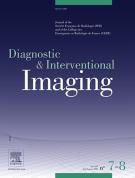Abdominal image quality and dose reduction with energy-integrating or photon-counting detectors dual-source CT: A phantom study - 28/09/24
 , Djamel Dabli a, 1, Sebastian Faby b, Maxime Pastor a, Cédric Croisille b, Fabien de Oliveira a, Julien Erath b, Jean Paul Beregi a
, Djamel Dabli a, 1, Sebastian Faby b, Maxime Pastor a, Cédric Croisille b, Fabien de Oliveira a, Julien Erath b, Jean Paul Beregi aHighlights |
• | Photon-counting CT decreases image noise and improves detectability of simulated abdominal lesions of an anthropomorphic phantom by comparison with dual-source CT. |
• | Image quality obtained with photon-counting CT indicates greater potential for dose optimization by comparison with dual-source CT. |
• | Abdominal images obtained with photon-counting CT are rated satisfactory for clinical use by the radiologists for all dose levels. |
Abstract |
Purpose |
The purpose of this study was to assess image-quality and dose reduction potential using a photon-counting computed tomography (PCCT) system by comparison with two different dual-source CT (DSCT) systems using two phantoms.
Materials and methods |
Acquisitions on phantoms were performed using two DSCT systems (DSCT1 [Somatom Force] and DSCT2 [Somatom Pro.Pulse]) and one PCCT system (Naeotom Alpha) at four dose levels (13/6/3.4/1.8 mGy). Noise power spectrum (NPS) and task-based transfer function (TTF) were computed to assess noise magnitude and noise texture and spatial resolution (f50), respectively. Detectability indexes (d’) were computed to model the detection of abdominal lesions: one unenhanced high-contrast task, one contrast-enhanced high-contrast task and one unenhanced low-contrast task. Image quality was subjectively assessed on an anthropomorphic phantom by two radiologists.
Results |
For all dose levels, noise magnitude values were lower with PCCT than with DSCTs. For all CT systems, similar noise texture values were found at 13 and 6 mGy, but the greatest noise texture values were found for DSCT2 and the lowest for PCCT at 3.4 and 1.8 mGy. For high-contrast inserts, similar or lower f50 values were found with PCCT than with DSCT1 and the opposite pattern was found for the low-contrast insert. For the three simulated lesions, d’ values were greater with PCCT than with DSCTs. Abdominal images were rated satisfactory for clinical use by the radiologists for all dose levels with PCCT and for 13 and 6 mGy with DSCTs.
Conclusion |
By comparison with DSCTs, PCCT reduces image-noise and improves detectability of simulated abdominal lesions without altering the spatial resolution and image texture. Image-quality obtained with PCCT seem to indicate greater potential for dose optimization than those obtained with DSCTs.
Le texte complet de cet article est disponible en PDF.Keywords : Abdomen, Iterative reconstruction, Multidetector computed tomography, Photon counting CT, Task-based image quality assessment
Abbreviations : CT, CTDIvol, d', DSCT, EID, FOV, HU, NPS, PCCT, PCD, ROI, TTF
Plan
Vol 105 - N° 10
P. 379-385 - octobre 2024 Retour au numéroBienvenue sur EM-consulte, la référence des professionnels de santé.
L’accès au texte intégral de cet article nécessite un abonnement.
Déjà abonné à cette revue ?

